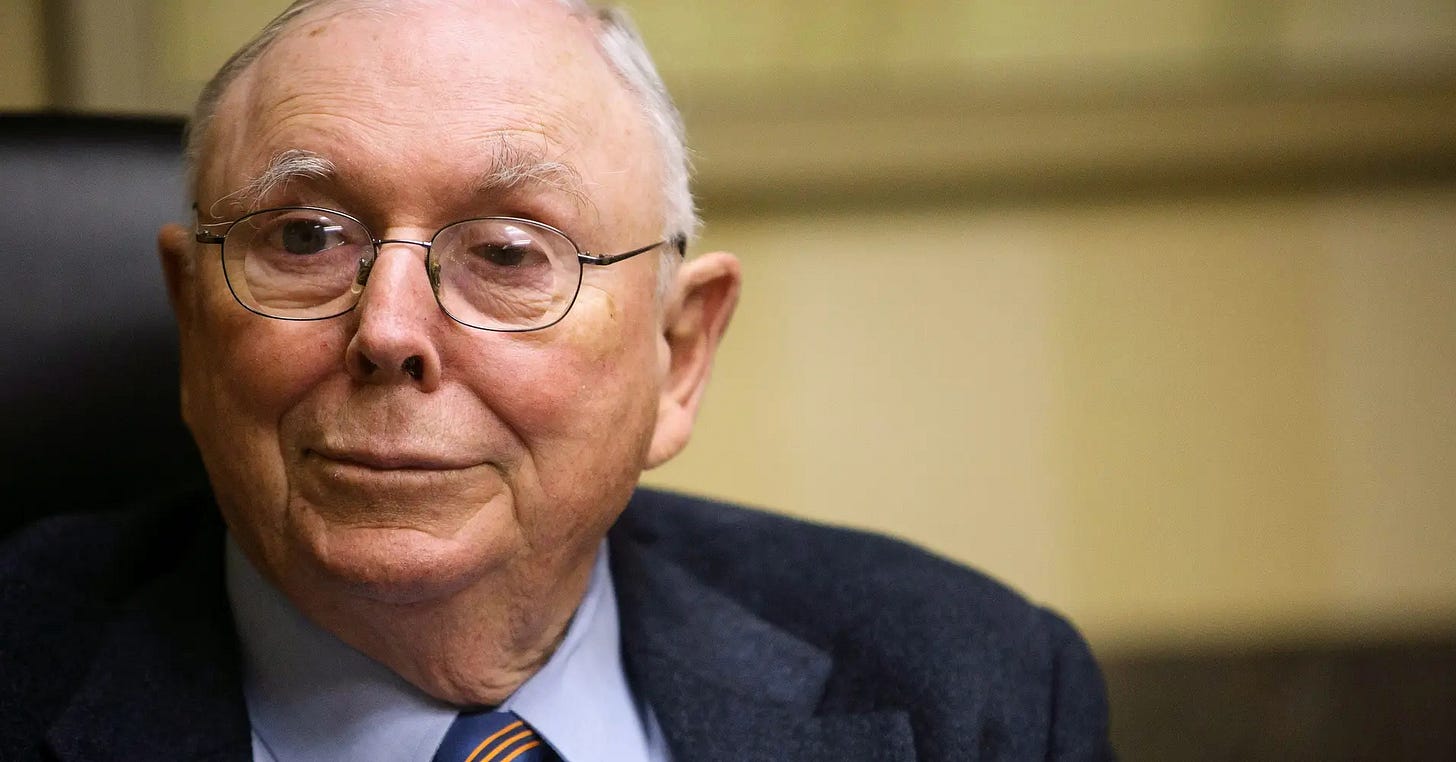Charlie Munger's Ultimate Buy-and-Hold Portfolio
Happy Monday!
In honor of the United States qualifying for the 2022 World Cup, why not start your day with an insightful quote from Li Lu on how value investing resembles the beautiful game…
“You may very well work extremely hard and seldom score. But occasionally — very occasionally — you get one or two great chances and you make decisive strikes that really matter.”
Charlie Munger and the Daily Journal
Last week, Charlie Munger announced that he’s stepping down as chairman of the Daily Journal Corp. Hardly shocking that a 98-year-old would choose to scale back his professional responsibilities, but a little sad all the same.
No question: Munger’s sure-handed stewardship of DJCO over the past forty-five years ranks among his finest accomplishments.
He purchased the Daily Journal, then just a legal newspaper, in 1977 for $2.5 million. Considering his legal background and growing interest in media, this move proved to be well within Munger’s circle of competence.
After an acquisitions spree in the 1980s, the Daily Journal soon resembled a legal news empire — albeit a regional one. Its stable of newspapers (and eventually websites) primarily covered California, Arizona, and a handful of other western states. Packed full of court calendars, appellate reports, profiles of judges, and foreclosure notices, this wasn’t exactly a high-growth enterprise. But one that served its niche well.
In recent years, as the media landscape shifts underfoot, DJCO shifts with it. The company created a new segment, Journal Technologies, that provides case management software and services to courts. Smart move.
Basically, in less than fifty years, Munger transformed the Daily Journal from a struggling legal newspaper into a profitable media/software/investment hybrid.
And — surprise, surprise — it’s that investment part that piques my interest…
The Ultimate Buy-and-Hold Portfolio
During the 2008-09 financial crisis, the Daily Journal’s dominant position in printing foreclosure notices really paid off. As money poured in, Munger dryly compared this stroke of “luck” as like being “undertakers during a plague”.
Munger took this excess cash and re-deployed it into bank stocks beaten down during the recession. In particular, Wells Fargo and Bank of America. Cash that would otherwise earn only nominal interest was now invested in securities (briefly) available at bargain basement prices.
Warren Buffett once lamented that he jumped the gun by spending too much of Berkshire Hathaway’s money in the early days of the financial crisis, not expecting the market’s true bottom to come the following year in March 2019. Charlie Munger, though, made no such mistake.
He reportedly snapped up shares of Well Fargo at just $8 a piece, describing the rock-bottom prices as a “once-in-forty-years opportunity”. Munger also added smaller positions in U.S. Bancorp and South Korean steelmaker Posco. (And, possibly, a stake in Chinese EV manufacturer BYD that’s held on a foreign exchange.)
At a time when fear and panic overwhelmed the stock market, with news of failing banks and foreclosed homes leading every newscast, Munger was hard at work ensuring a brighter future for DJCO.
In all, he spent about $20 million — with the vast majority in bank stocks trading at generational lows.
And, then, he waited.
And waited.
And waited.
Other than paring back the Daily Journal’s position in Posco in Q4 2014, Munger didn’t touch the portfolio until 2021. Then, after more than a decade of inactivity, he plunged back into the market and bought over 600,000 shares of Alibaba. The Chinese e-commerce giant dipped nearly 50% last year — and Munger kept buying all the way down. And, considering BABA has dropped another 8% in 2022, he’s probably still buying.
Based on all available financial information, Alibaba is currently undervalued. Deeply, agonizingly undervalued. Munger’s interest makes complete sense.
But many investors (including myself) are leery of pouring money into Chinese stocks with so few guarantees about how the CCP will handle, well, pretty much everything. No one wants to wake up one day to find out that Chinese stocks were just de-listed from American exchanges or that China decided to nationalize all foreign investment.
Munger, though, has always been notably bullish on the Chinese market.
Regardless of how you feel about Alibaba’s future prospects, the Daily Journal’s investment portfolio is just a joy to behold. It’s super concentrated — Bank of America (39.5%), Wells Fargo (29.5%), and Alibaba (27.5%) — with about as little diversification as humanly possible.
It breaks all the rules and seems incredibly risky at first glance — but, since the stock was all purchased at cut-rate prices, actually has a massive margin of safety. There’s a certain romance to just poking your head into the market every decade or so, loading up on the most undervalued stock, and then going back to sleep for another ten years.
With DJCO, that’s basically been Munger’s game: Bide your time, pounce on severely underpriced stock, never touch it, and watch your wealth grow.
This portfolio now accounts for 61.5% of the Daily Journal’s $420 million market cap — and, if Alibaba rebounds in the coming years like it probably will, that number’s only gonna get bigger.
Thankfully, for all of us in awe of Munger’s expert-level buy-and-hold portfolio, he’s not really going anywhere. He won’t be the DJCO chairman anymore — and, sadly, probably won’t hold court at the company’s annual meeting — but Munger plans to continue overseeing the Daily Journal’s investment portfolio.
And, for as long as he sticks around, class is in session. This is how buy-and-hold investing is done.
Disclosure: This is not financial advice. I am not a financial advisor. Do your own research before making any investment decisions.

